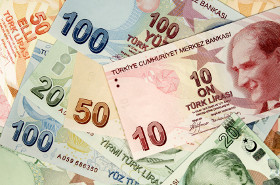The Turkish lira is slumping to its lowest level against the US dollar in two months as investors fear that it is poised for another currency crisis. The lira has been steadily rebounding since falling to an all-time low against the greenback, but analysts warn that the fundamentals, from inflation to foreign exchange reserves, do not support its gains. Is another crash going to happen soon?
The Turkish government recently reported that inflation surged at an annualized rate of 12.62% in June, up from 11.39% in the previous month. The highest reading since August 2019 was also higher than the median estimate of 12.09%.
Costs spiked at a faster pace for everything: food and beverage (12.93%), housing and utilities (14.95%), transportation (10.96%), apparel (10.66%), leisure and hospitality (11.13%). The inflation rate for miscellaneous goods and services was still high, but it slowed to 19.8% last month.
According to the Turkish Statistical Institute, the producer price index (PPI) advanced 6.17% year-over-year in June, up from the 5.53% gain in the previous month. Prices ballooned for manufacturing (5.99%), mining (4.19%), water supplies (7.3%), and energy (9.4%).
The data came at around the same time the central bank reported that gross foreign exchange reserves dipped to $51.42 billion in the week ending June 26. This is down from the $53.22 billion from the previous week. The weekly money and banking report also showed that net international reserves slipped from $31.46 billion to $29.08 billion. Gold reserves have also decreased.
Ankaraâs forex reserves have been plummeting since March as central bank officials tried to prop up the currency and protect it from financial ruin. Although policymakers failed to prevent the liraâs crash to an all-time low, the currency has slightly rebounded over the last three months. But do not expect this to be the case moving forward, analysts from Moodyâs Investor Services warn.
Due to the shrinking foreign reserves, higher inflation, increasing foreign-denominated debt, and currency devaluation, the lira could face a significant crash that could be worse than what occurred this past spring. The only thing that could prevent inflation from exploding is higher interest rates, but President Recep Tayyip Erdogan and the central bank have maintained an unconventional and opposite view. Over the last year, Erdogan has chosen to slash interest rates to boost growth and spending to stimulate the economy, especially after the coronavirus paralyzed Turkeyâs economy.
Our forecast includes an economic contraction of 5 per cent in 2020, with the downturn concentrated in the first half of the year, followed by a relatively slow recovery by Turkish standards of around 3.5 per cent in 2021 as a consequence of various structural restraints.
Moodyâs maintains a B1 rating on Turkeyâs foreign and local currency bond debt, with a negative outlook.
It should be noted that the central bank left interest rates unchanged at its Monetary Policy Committee meeting last month, which was the first time officials did not easy policy in about a year.
Meanwhile, a Reuters poll of economists forecasts Turkeyâs industrial production will have contracted 22.5% on an annualized basis in May. The current crop of projections anticipated that the factory output would slide between 16.6% and 31.4%.
The USD/TRY currency pair edged up 0.06% to 6.8637, from an opening of 6.8594, at 18:41 GMT on Wednesday. The EUR/TRY picked up 0.58% to 7.7791, from an opening of 7.7347.
If you have any questions, comments, or opinions regarding the Turkish Lira, feel free to post them using the commentary form below.
